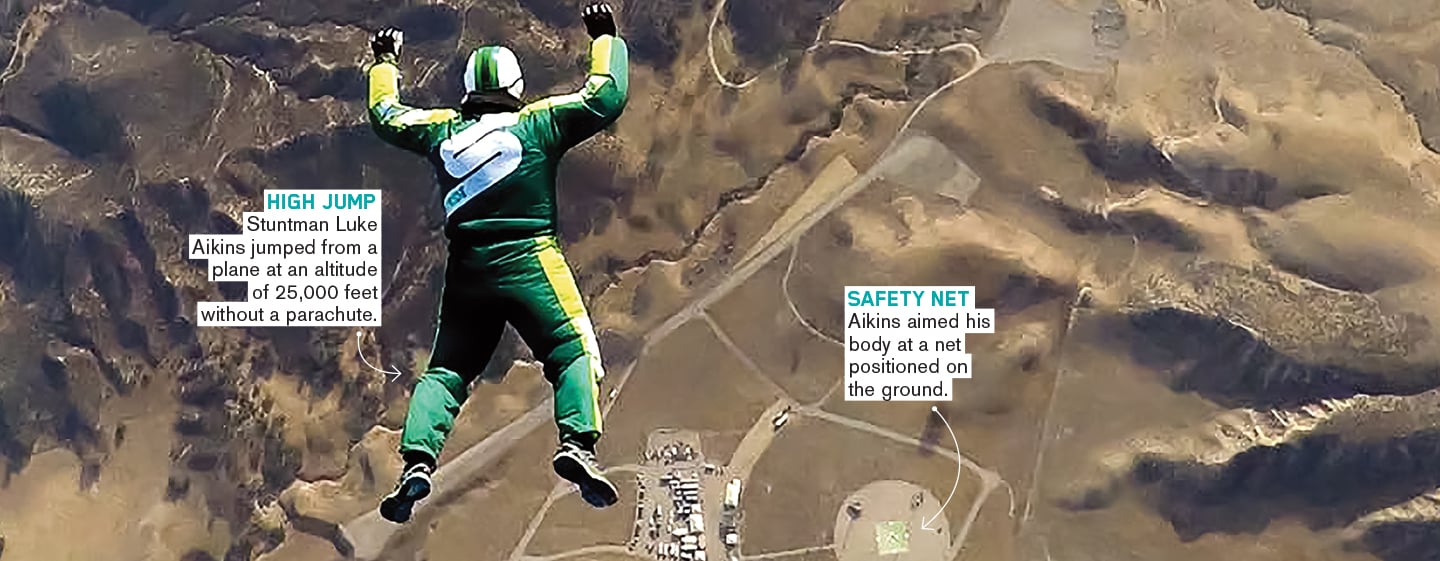Diving from an airplane is usually no big deal for Luke Aikins. He’s a professional skydiver who has completed about 18,000 jumps, including aerial stunts for movies like Iron Man 3 and Godzilla. But a jump he made last July would have made anyone nervous—even a seasoned skydiver like Aikins. That’s because he executed it without a parachute from an altitude of 7,620 meters (25,000 feet).
During the jump, Aikins reached a speed of about 190 kilometers (118 miles) per hour as he rocketed toward Earth. A team of skydivers wearing parachutes jumped with him, some filming the feat for a live TV broadcast. After about two minutes, Aikins landed safely in a net on the ground.
“When I landed, it was wild!” says Aikins, who lives in Shelton, Washington, and performed the stunt in Simi Valley, California. “About halfway up in the plane, I thought: ‘Why am I doing this?’” he says. “If you don’t have a moment like that, you’re not human.”
Diving from an airplane is usually no big deal for Luke Aikins. He’s a professional skydiver who has completed about 18,000 jumps. That includes stunts for movies like Iron Man 3 and Godzilla. But a jump he made last July would have made anyone nervous—even a seasoned skydiver like Aikins. That’s because he performed it without a parachute from a height of 7,620 meters (25,000 feet).
During the jump, Aikins reached a speed of about 190 kilometers (118 miles) per hour as he rocketed toward Earth. A team of skydivers wearing parachutes jumped with him. Some of them filmed the feat for a live TV broadcast. After about two minutes, Aikins landed safely in a net on the ground.
“When I landed, it was wild!” says Aikins, who lives in Shelton, Washington. He performed the stunt in Simi Valley, California. “About halfway up in the plane, I thought: ‘Why am I doing this?’” he says. “If you don’t have a moment like that, you’re not human.”

